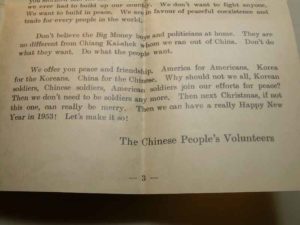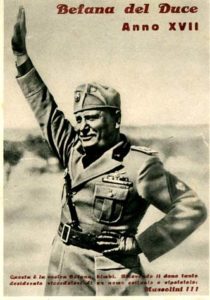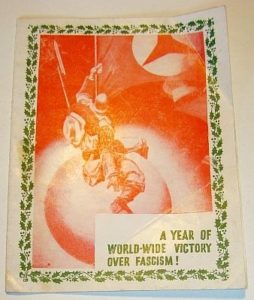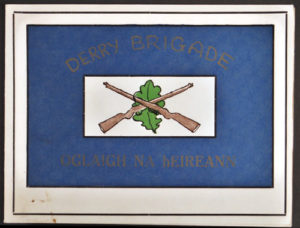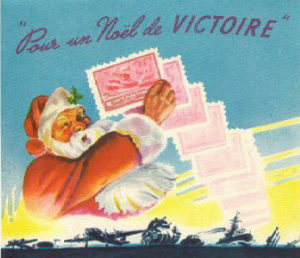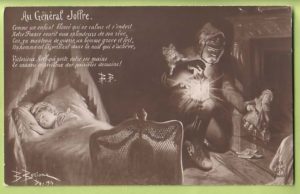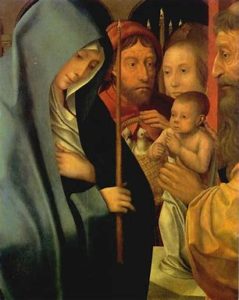It is common during wartime to use Christmas as a psychological ploy against one’s enemies, usually by encouraging opposition soldiers to desert or weaken their resolve. Here is one used by Communist forces during the Korean War. Inside was a letter telling American and Allied troops that this was an unjust war.
Befana del Duce
For Whom the Bell Tolls
Here is an extremely rare card from the Spanish Civil War in 1937. Inside it reads:
With the Season’s Greetings
Christmas… 1937
New Year… 1938
From the Volunteers of the 15th International Brigade and Their Brothers in the Spanish Republican Army
British Battalion • Lincoln-Washington Battalion • Mackenzie-Papineau Battalion • And Spanish Volunteers.
The Mackenzie-Papineau Battalion (the “Mac-Paps”) were the Canadian volunteers who fought against Franco’s forces on behalf of the Spanish Republic.
Keep Calm and Carry On
A plucky British card from 1940. The undaunted middle-class gent prepares to spend the night in the Tube station with his gas mask and blanket.

An IRA card
Victorious Christmas
Père Noël in World War I
Dogs and Victory
Here is a very curious American card from 1943 produced by someone who obviously loved dogs. The borzoi of Russia, the Pekinese of China, the British bulldog and the American boxer pull the sled of unity toward world peace.
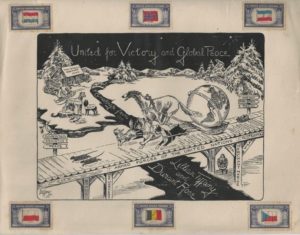
French Prisoners
Candlemas
February 2; since the sixth century the day of the Feast of the Purification of the Blessed Virgin Mary and now known as the Feast of the Presentation, marking the ritual in the Temple required by Jewish law law forty days after the birth of a male child.
When the infant Jesus was brought to the Temple, Simeon spoke of him as “a light to lighten the Gentiles” (Luke 2:32) and so light is the theme of the day. Believers bring a candle to the church to be blessed; these candles are thought to possess magical powers against sickness and thunder storms. Across many cultures it is the last day of the Christmas season when all ornaments must be taken down and greenery burnt. In England the Yule log for the next Christmas was selected and set to dry; in Mexico it is the Dia de Candelaria when the image of the baby Jesus is removed from the cradle. On Candlemas, Scottish school children used to bring money to their teacher to buy candles to light the school room, a practice that turned into simply bringing gifts to the master. The boy who brought the most money (the term for this gratuity was bleeze-money) was named Candlemas King whose reign lasted six weeks and who was allowed to remit punishments.
The custom of predicting the weather based on conditions on Candlemas has turned into Groundhog Day wherein North Americans watch the emergence of particular groundhogs from their hibernation — if they see their shadows on February 2, six more weeks of winter will follow. (Americans scrutinize the reaction of the Pennsylvania groundhog named Punxsutawney Phil while Canadians observe Ontario’s Wiarton Willie.) Candlemas was also believed to be a time when the soul of Judas was temporarily allowed out of Hell to ease his torment in the sea.

